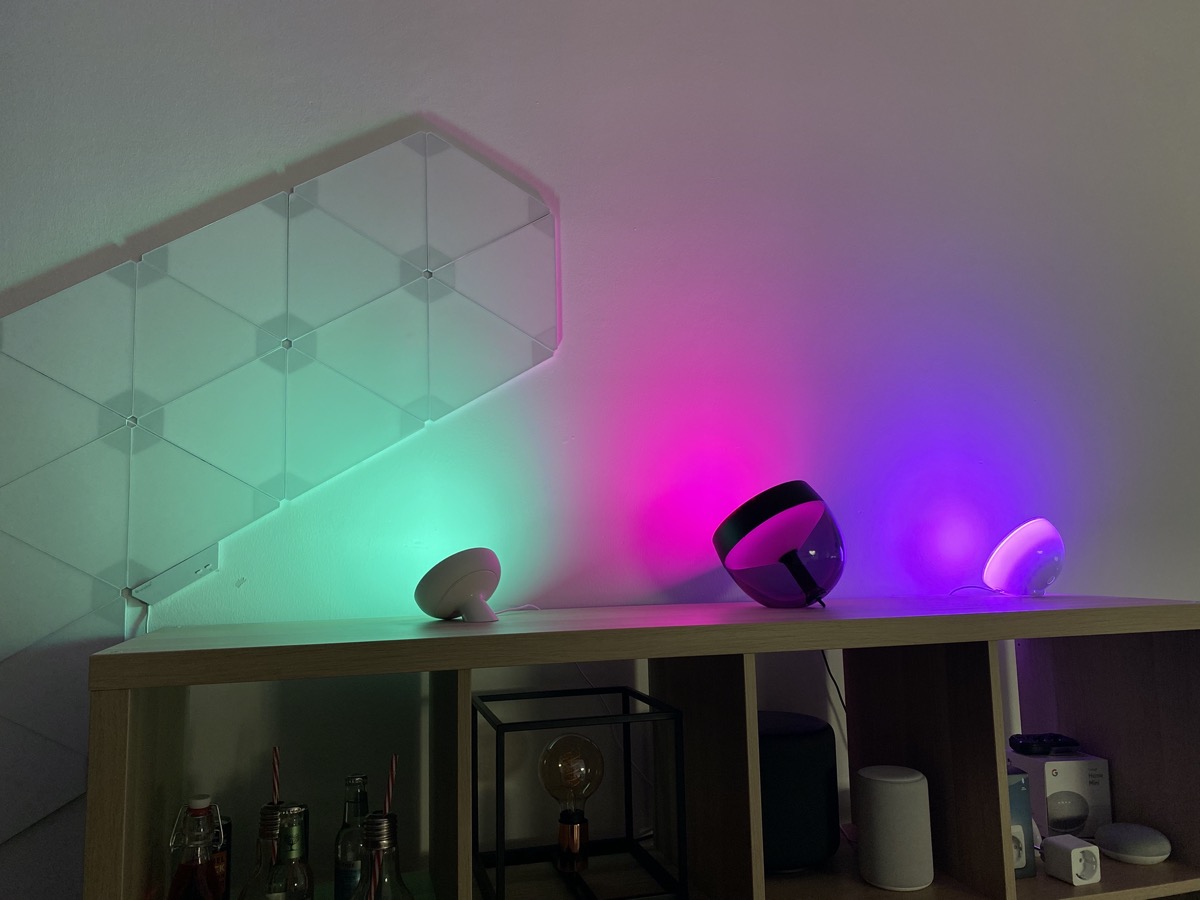


Hue go vs bloom full#
To tap into the full potential of the Philips Hue Go, you’ll need a Bridge connected to your local network. Fortunately the Go comes bundled with a power cable that’s long enough to allow for flexible placement around the house. For full 100% brightness you’ll need to connect to a power outlet. If you decide to run on battery for maximum portability, you’ll find that the Hue Go’s brightness maxes out at 40%, which is still quite bright. Painting my wall with light (running on battery) Once the unit lands on a color of your liking, simply release the button. Doing so will cause the light to cycle through a variety of colors. Users can also customize the light emitted from the Go by double pressing and holding the physical button. The Go comes bundled with 7 different lighting presets that can be cycled through by pressing the button on the bottom of the unit. This is an important feature, especially when you consider the wireless nature of the device. Using the Philips Hue Go sans BridgeĪs mentioned, the Philips Hue Go can be used independently of the Philips Hue Bridge.

It’s sounds cliché, but the portability makes it so that you’re limited only by your imagination. The beauty of the Go is that it’s flexible and portable. The light can be used upright to add visual ambience to any room, or you can utilize the stand to paint light on walls. The Hue Go can be positioned like a bowl that projects light up, or you can use its stand to project light outwardly. Philips notes that the unit can withstand high humidity settings, but it’s not water-resistant, so you may want to keep it away from the pool, from rain, etc. It’s not built to withstand drops or dings, but I’d feel totally fine taking it with me out on the deck or to the park. Subscribe to our YouTube channel for more hands-on videosīuild quality-wise, the Philips Hue Go seems decent enough. Below the stand lies the 24V DC port for connecting the 6-foot power cable that comes bundled inside the box. Next to the button rests a protrusion that serves as a stand to assist with projecting light outwardly. On the bottom of the unit you’ll find a physical button that serves as both a power button and a toggle for the light’s colors. It’s a sphere that’s been sliced in half, although the flat part of the unit is slightly convex. The outer shell of the Philips Hue Go is comprised entirely of frosted white plastic that allows light to shine through. Non-replaceable rechargeable Li-ion battery.Should you consider adding the Philips Hue Go to your lighting repertoire? Have a look at our video walkthrough for my hands-on impressions and overview. The Bridge isn’t a requirement to use the Go, but it does allow you to tap into the full potential of the product. The unit can be stay on for 3 hours thanks to its built-in rechargeable battery, but can also be powered via a wall outlet.Īlthough the Hue Go comes bundled with 7 lighting presets, it really shines when combined with the Philips Hue Bridge.
Hue go vs bloom portable#
The Go is an ~$80 portable light, the size of a small cantaloupe that’s been sliced in half. The Philips Hue Go seemed particularly intriguing thanks to its battery-powered portability. After going hands-on with the Philips Hue Lightstrip Plus, I was eager to try out other products in the Hue lineup.


 0 kommentar(er)
0 kommentar(er)
